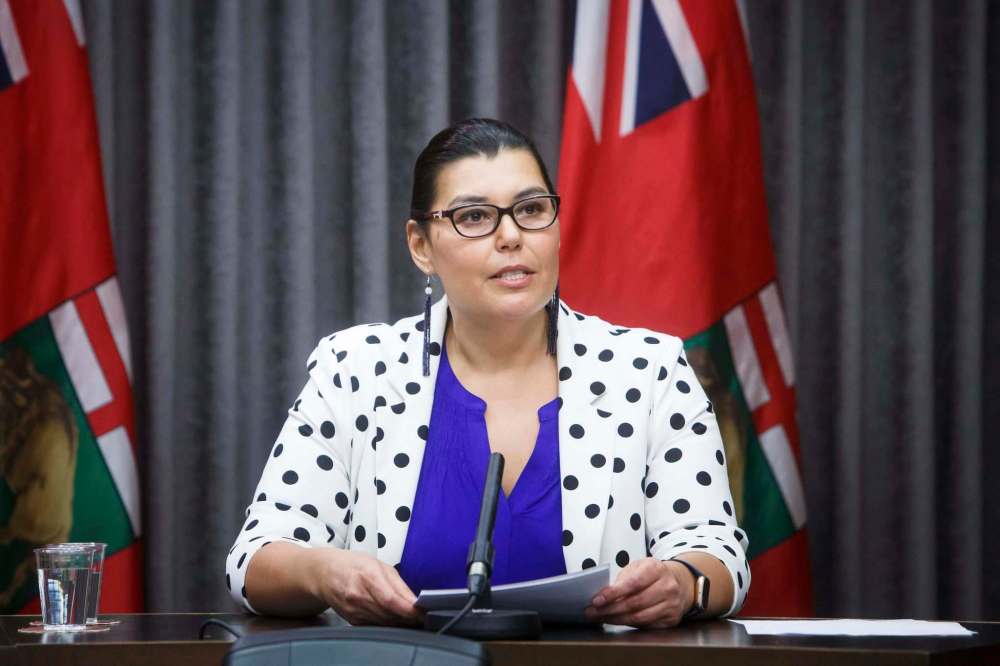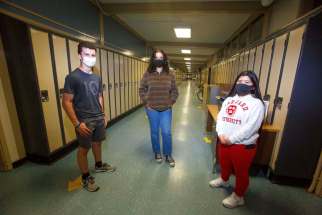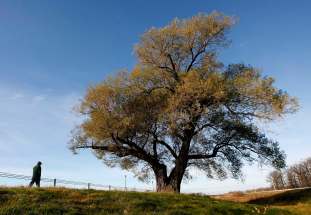Vaccine rollout failed at-risk BIPOC population
Read this article for free:
or
Already have an account? Log in here »
To continue reading, please subscribe:
Monthly Digital Subscription
$0 for the first 4 weeks*
- Enjoy unlimited reading on winnipegfreepress.com
- Read the E-Edition, our digital replica newspaper
- Access News Break, our award-winning app
- Play interactive puzzles
*No charge for 4 weeks then price increases to the regular rate of $19.00 plus GST every four weeks. Offer available to new and qualified returning subscribers only. Cancel any time.
Monthly Digital Subscription
$4.75/week*
- Enjoy unlimited reading on winnipegfreepress.com
- Read the E-Edition, our digital replica newspaper
- Access News Break, our award-winning app
- Play interactive puzzles
*Billed as $19 plus GST every four weeks. Cancel any time.
To continue reading, please subscribe:
Add Free Press access to your Brandon Sun subscription for only an additional
$1 for the first 4 weeks*
*Your next subscription payment will increase by $1.00 and you will be charged $16.99 plus GST for four weeks. After four weeks, your payment will increase to $23.99 plus GST every four weeks.
Read unlimited articles for free today:
or
Already have an account? Log in here »
Hey there, time traveller!
This article was published 09/07/2021 (1612 days ago), so information in it may no longer be current.
More than half of eligible Manitobans are now double-dosed. While the COVID-19 vaccination rates are cause for celebration, the way we got here is not.
Manitoba’s vaccine task force appears to have failed to account for race-based risk factors when determining vaccination eligibility, likely leading to higher hospitalizations and worse outcomes for residents who are Black, Indigenous or people of colour, according to data released last week.
During the third wave of the pandemic, intensive-care admission rates were more than four times higher for BIPOC communities than for white residents. Racialized patients were also 10 years younger, on average, than their white counterparts and many were not yet eligible for a vaccine — an indication of the shortcomings of a rollout based on age alone.
The fact BIPOC communities are disproportionately affected by COVID-19 isn’t news. Public health has been collecting race and ethnicity data related to the pandemic since last year, and in March the province released a report showing racialized Manitobans accounted for more than half of infections, while making up only 35 per cent of the population.
Systemic barriers such as poverty, overcrowded housing and high-risk employment are major contributors to the health disparity. None of this is news.
Previous race-based data could have been used to inform the vaccine rollout, and people have suffered unnecessarily because it wasn’t.
If certain groups were at higher risk of contracting the virus, those groups should have been afforded extra protection and an earlier shot in the arm. From the start, older Manitobans and First Nation groups have been given immunization priority because evidence tells us those cohorts are more likely to experience severe illness. People of colour have not been afforded the same consideration.
Between March and June, infection rates among Manitobans of southeast Asian descent were more than 21 times that of white people. For African residents, infection rates were more than eight times higher. If racialized communities are disproportionately affected by the pandemic, public-health decisions are a major contributing factor.
The report released on Monday is a data-rich document that gives the public a more fulsome view of the health crisis. It’s also a damning admission of the province’s inability to change course quickly based on the best information available. Public health has been collecting third-wave hospitalization data since the end of March, but little has been done to meaningfully address the racial inequalities outlined in this and previous reports.

The vaccine rollout is well advanced and everyone 12 years and older is now eligible for a shot. But the work isn’t done yet. Manitoba is likely to experience a fourth wave fuelled by virus variants, and the vaccine task force needs to ensure those in BIPOC communities are protected from becoming statistical outliers — again.
During a media briefing last week, Dr. Marcia Anderson, medical lead of the First Nations Pandemic Response Co-ordination Team, said that while equitable vaccine access should be a priority in the short term, more needs to be done to address the wider systemic issues contributing to poor health outcomes among racialized people.
“We do have opportunities to invest in housing and education and employment to promote … the equal opportunity to be healthy,” she said.
As Manitoba gears up for a two-dose summer, those who have been hit hardest by the pandemic deserve more than a return to normal. Systemic barriers require systemic changes, and the government has more than enough data to chart a path forward. We can celebrate how far we’ve come when everyone has an equal opportunity to be healthy.








